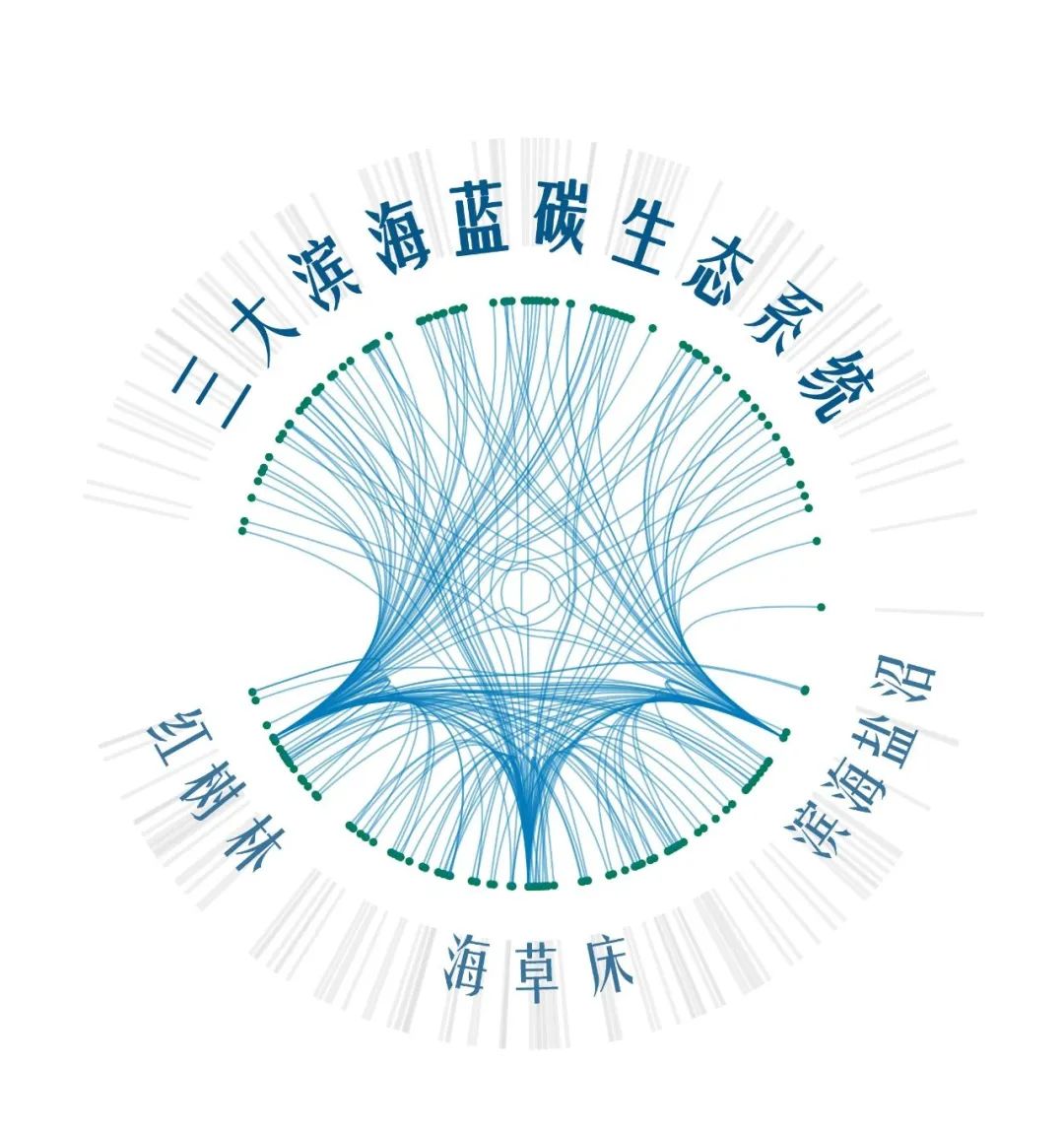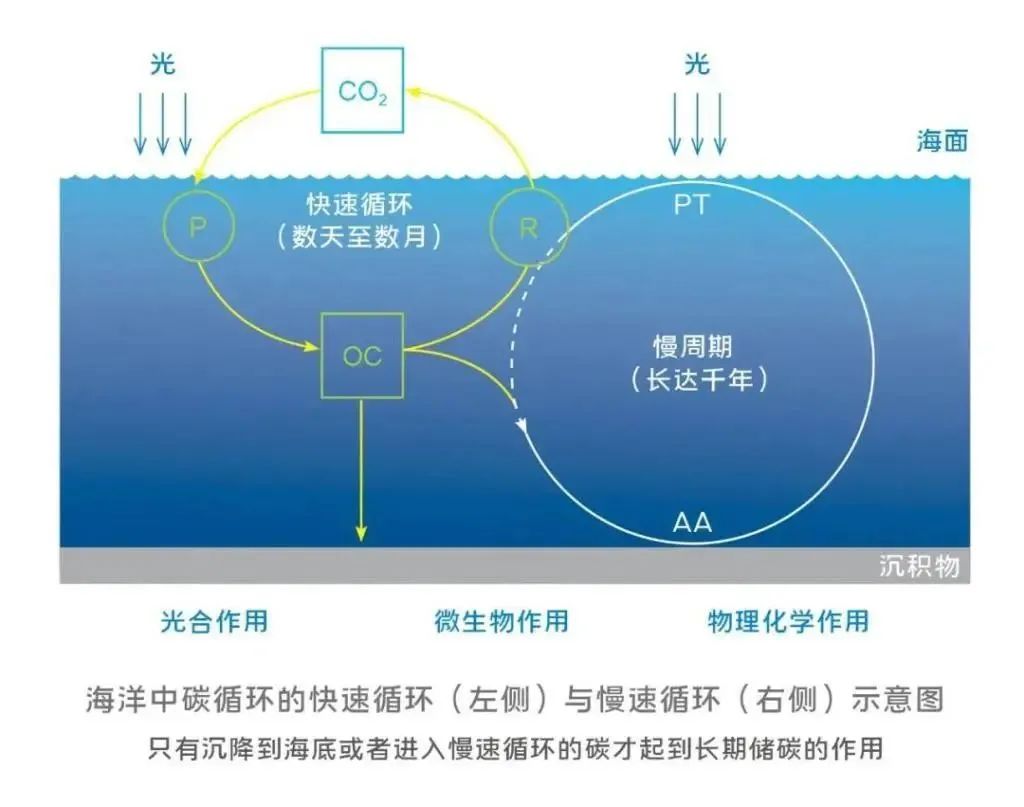Do you know what "blue carbon" is?
From: This site Time: 2022.07.25 View:
The concept of "blue carbon" comes from the "Blue Carbon" jointly released by the United Nations Environment Programme (UNEP), the Food and Agriculture Organization (FAO) and the UNESCO Intergovernmental Oceanographic Commission (IOC-UNESCO) in 2009. The Blue Carbon Report, an assessment of healthy Ocean Carbon Sequestration, refers specifically to carbon that is locked up in Marine ecosystems such as mangroves, salt marshes and seagrass beds. These coastal ecosystems that can sequester and store carbon are called "coastal blue carbon ecosystems", among which mangroves, seagrass beds and coastal salt marshes are called "three major coastal blue carbon ecosystems".

So what are the superpowers of coastal blue carbon ecosystems? Mangroves, seagrass beds and salt marshes, as three coastal blue carbon ecosystems, can capture and store a large amount of carbon, with high carbon sequestration efficiency. Although these three ecosystems cover less than 0.5% of the seabed and account for only 0.05% of the plant biomass on land, their carbon stocks are as high as more than 50% and possibly as high as 71% of the Marine carbon stocks.

According to statistics, the annual carbon storage of the coastal blue carbon ecosystem, including estuaries and offshore shelves, is 237.6 million tons, much higher than the carbon storage rate of the deep sea. The carbon burial rates per unit area of these ecosystems were 4.5, 3.0 and 4.8 times higher than those of terrestrial temperate, tropical and boreal forests, respectively. In North Carolina, for example, a quarter of a square kilometre of coastal salt marsh can store the same amount of carbon dioxide a year as burning 28,000 litres of petrol.
Specifically, carbon in coastal blue carbon ecosystems is stored in the soils of mangroves, salt marshes and seagrass beds, aboveground living biomass (leaves, branches, trunks), underground living biomass (roots), and non-living biomass (such as litter and dead wood). Like carbon stored in terrestrial ecosystems, blue carbon is carbon that has been fixed by living plants over a relatively short period of time (years to decades).
Different from the carbon saturation phenomenon in terrestrial ecosystems, the carbon fixed in the soil of coastal blue carbon ecosystem can be buried in a large range and for a long time, thus forming a huge carbon storage.
The difference between coastal blue carbon ecosystem and terrestrial ecosystem is also reflected in the potential soil carbon accumulation: terrestrial soil is rich in oxygen, which enables aerobic microorganisms to oxidize soil carbon and return it to the atmosphere; The saturated soil water environment of the coastal blue carbon ecosystem keeps the soil in an anaerobic state, thus maintaining carbon storage in the vertical direction. For example, the Great Ocean Waves seagrass beds in the bay of Port Ligat in Spain and the 6,000-year-old mangrove deposits in Brazil, which are tens of meters thick, are huge sediment carbon reservoirs.
In addition to its strong carbon sequestration capacity, coastal blue carbon ecosystems also play an important role in biodiversity conservation.
Coastal blue carbon ecosystems such as mangroves, seagrass beds and salt marshes, for example, protect coastal zones by slowing coastal erosion and protecting shorelines. The importance of coastal blue carbon ecosystems has been widely recognized after disasters such as the Indian Ocean tsunami in December 2004 and Typhoon Haiyan, which made landfall in the Philippines in 2013.
Coastal blue carbon ecosystems not only regulate water quality and provide important habitats for fish and shellfish, but also provide habitats for many endangered and rare species. They are also nutrient sources for neighboring ecosystems and provide living space for important economic species, thus providing ecological tourism functions.


So what are the superpowers of coastal blue carbon ecosystems? Mangroves, seagrass beds and salt marshes, as three coastal blue carbon ecosystems, can capture and store a large amount of carbon, with high carbon sequestration efficiency. Although these three ecosystems cover less than 0.5% of the seabed and account for only 0.05% of the plant biomass on land, their carbon stocks are as high as more than 50% and possibly as high as 71% of the Marine carbon stocks.

According to statistics, the annual carbon storage of the coastal blue carbon ecosystem, including estuaries and offshore shelves, is 237.6 million tons, much higher than the carbon storage rate of the deep sea. The carbon burial rates per unit area of these ecosystems were 4.5, 3.0 and 4.8 times higher than those of terrestrial temperate, tropical and boreal forests, respectively. In North Carolina, for example, a quarter of a square kilometre of coastal salt marsh can store the same amount of carbon dioxide a year as burning 28,000 litres of petrol.
Specifically, carbon in coastal blue carbon ecosystems is stored in the soils of mangroves, salt marshes and seagrass beds, aboveground living biomass (leaves, branches, trunks), underground living biomass (roots), and non-living biomass (such as litter and dead wood). Like carbon stored in terrestrial ecosystems, blue carbon is carbon that has been fixed by living plants over a relatively short period of time (years to decades).
Different from the carbon saturation phenomenon in terrestrial ecosystems, the carbon fixed in the soil of coastal blue carbon ecosystem can be buried in a large range and for a long time, thus forming a huge carbon storage.
The difference between coastal blue carbon ecosystem and terrestrial ecosystem is also reflected in the potential soil carbon accumulation: terrestrial soil is rich in oxygen, which enables aerobic microorganisms to oxidize soil carbon and return it to the atmosphere; The saturated soil water environment of the coastal blue carbon ecosystem keeps the soil in an anaerobic state, thus maintaining carbon storage in the vertical direction. For example, the Great Ocean Waves seagrass beds in the bay of Port Ligat in Spain and the 6,000-year-old mangrove deposits in Brazil, which are tens of meters thick, are huge sediment carbon reservoirs.
In addition to its strong carbon sequestration capacity, coastal blue carbon ecosystems also play an important role in biodiversity conservation.
Coastal blue carbon ecosystems such as mangroves, seagrass beds and salt marshes, for example, protect coastal zones by slowing coastal erosion and protecting shorelines. The importance of coastal blue carbon ecosystems has been widely recognized after disasters such as the Indian Ocean tsunami in December 2004 and Typhoon Haiyan, which made landfall in the Philippines in 2013.
Coastal blue carbon ecosystems not only regulate water quality and provide important habitats for fish and shellfish, but also provide habitats for many endangered and rare species. They are also nutrient sources for neighboring ecosystems and provide living space for important economic species, thus providing ecological tourism functions.



 All rights reserved Sichuan ICP No. 12019139 Sichuan Public Network Security No. 44030502001115
All rights reserved Sichuan ICP No. 12019139 Sichuan Public Network Security No. 44030502001115


